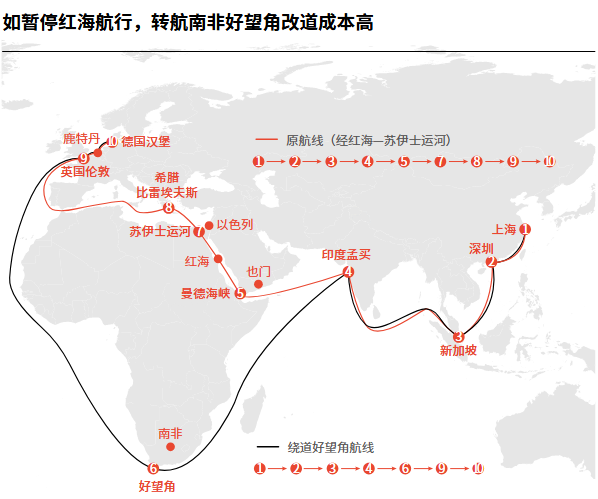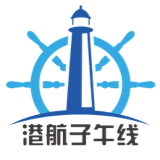Breaking News: U.S. Senate Proposes 500% Secondary Tariffs! Aircraft Carrier Attacked Again! 突发:美国国会参议院提出500%二级关税!航母再遭袭!
Breaking News: U.S. Senate Proposes 500% Secondary Tariffs! Aircraft Carrier Attacked Again!
突发:美国国会参议院提出500%二级关税!航母再遭袭!
According to CCTV News, on April 6 local time, the military spokesperson of the Houthi forces issued a statement, claiming that the group had conducted an engagement operation in the northern Red Sea, using multiple cruise missiles and drones to strike targets including the U.S. aircraft carrier USS Harry S. Truman and several accompanying warships. Additionally, the Houthi forces targeted a U.S. supply ship supporting the Truman carrier. Earlier, on the evening of April 5, the U.S. military carried out multiple airstrikes on the western areas of Saada City in northern Yemen.
American media reported that within three weeks, the total cost of U.S. military operations against the Houthi forces has approached $1 billion. A U.S. military official stated that B-2 stealth bombers also participated in recent airstrikes against Houthi targets in Yemen. The repeated attacks by the Houthi forces on U.S. carriers have drawn significant international attention.
据央视新闻消息,当地时间4月6日,胡塞武装军事发言人发布声明称,该武装在红海北部对敌方军舰实施了一次交战行动,使用了多枚巡航导弹和无人机,打击目标包括以美国“杜鲁门”号航母为首的多艘战舰。此外,胡塞武装还打击了一艘为“杜鲁门”号航母提供补给的美军补给舰。此前4月5日晚间,美军对也门北部萨达省萨达市西部地区进行了多次空袭。
另有美媒报道称,三周时间内,美国军方对胡塞武装的行动总成本已接近10亿美元。一名美军官员表示,B-2轰炸机也参加了近期对也门胡塞武装的空袭行动。胡塞武装对美国航母发动多次袭击引起国际社会的广泛关注。
Timeline of Events:
时间线梳理:
March 15, 2025: Large-scale U.S. airstrikes
President Trump ordered 47 airstrikes on Houthi-controlled areas in Sana'a and Saada Province, resulting in at least 53 deaths and 101 injuries. The U.S. claimed the operation targeted Houthi leadership and Iranian support networks, killing several Houthi commanders.
2025年3月15日:美军发动大规模空袭
美国总统特朗普下令对也门胡塞武装控制的萨那、萨达省等地发动47次空袭,造成至少53人死亡、101人受伤。美方宣称此次行动针对胡塞武装领导层及伊朗支持网络,并击毙多名胡塞高层。
March 16, 2025: First Houthi retaliation against the Truman carrier
The Houthi forces launched 18 ballistic missiles, cruise missiles, and one drone at the USS Harry S. Truman carrier strike group in the Red Sea. Spokesperson Yahya Sarea stated this was in retaliation for the U.S. airstrikes, threatening to expand attacks to all U.S. ships in the Red Sea and Arabian Sea. The U.S. denied damage to the carrier, claiming to have intercepted missiles and shot down 11 drones. Houthi leader Abdul-Malik al-Houthi declared in a televised address that the group would "escalate in response to escalation," accusing the U.S. of turning the sea into a battlefield and disrupting international shipping.
2025年3月16日:胡塞武装首次反击,袭击“杜鲁门”号航母
胡塞武装使用18枚弹道导弹、巡航导弹及1架无人机,对红海的美国“哈里·杜鲁门”号航母编队发动袭击。其发言人叶海亚·萨雷亚称此举为报复美军空袭,并威胁将扩大打击范围至所有红海和阿拉伯海的美军舰船。美方否认航母受损,称击落11架无人机并拦截导弹。也门胡塞武装领导人阿卜杜勒·马利克·胡塞发表电视讲话称,胡塞武装“将以升级应对升级,袭击红海的美军航母、军舰和美国船只。”马利克·胡塞指责美国“将海洋变成战场,影响国际航运。”
March 17, 2025: Second strike within 24 hours
The Houthi forces announced a second round of attacks on the Truman carrier group, using precision missiles and drones. This was seen as a strong response to Trump's "decapitation strikes." The U.S. continued to deny the carrier was hit but acknowledged a significant increase in Houthi attack frequency.
2025年3月17日:24小时内第二次袭击
胡塞武装宣布对“杜鲁门”号航母编队实施第二轮打击,使用精准导弹和无人机。此次袭击被外界视为对特朗普“斩首行动”的强硬回应。美方仍否认航母被击中,但承认胡塞武装的攻击频率显著上升。
March 20, 2025: Escalation by both sides
The U.S. expanded its airstrikes, targeting Houthi-controlled ports and airports. The Houthi forces adjusted their tactics, opting for multi-wave, small-scale attacks to exhaust U.S. defensive resources. Analysts noted that the Houthi forces would need to break through three layers of U.S. defense (long-range interception, medium-range missile systems, and close-in weapons systems) to pose a substantive threat to the carrier.
2025年3月20日:美军升级打击与胡塞战术调整
美军扩大空袭范围,摧毁胡塞控制的港口和机场。胡塞武装则调整策略,尝试通过多波次、小规模攻击消耗美军防御资源。专家分析,胡塞需突破美军三层防御体系(远程拦截、中程导弹系统、近防炮)才可能对航母构成实质威胁。
April 4, 2025: Third Houthi attack
The Houthi forces struck the Truman carrier group again with drones and missiles, emphasizing their determination to blockade the Red Sea shipping route. The U.S. did not disclose specific losses but acknowledged increased pressure on interception operations.
2025年4月4日:胡塞宣称第三次袭击
胡塞武装再次使用无人机和导弹攻击“杜鲁门”号航母及其舰队,强调其封锁红海航道的决心。美方未公布具体损失,但承认拦截行动压力增大。
April 6, 2025: Latest attack targets supply ships
The Houthi forces launched a fourth attack, this time including supply ships supporting the carrier. This marked the first targeting of logistics vessels, indicating an intention to weaken the U.S. military's sustained operational capacity.
2025年4月6日:最新袭击与补给舰目标扩展
胡塞武装发动第四次攻击,目标包括为航母提供补给的军舰。此次行动首次涉及后勤舰船,显示其意图削弱美军持续作战能力。
Analysis of Conflict Background and Motivations
冲突背景与动因分析
Spillover of the Israel-Palestine Conflict and Regional Power Struggles
The Houthi forces explicitly linked their attacks on U.S. carriers to Israel's blockade of the Gaza Strip, stating they would continue targeting U.S. and Israeli vessels unless the blockade was lifted and humanitarian aid was allowed. The U.S. accused Iran of providing missile technology to the Houthis, aiming to curb Iranian regional influence through strikes against the group.
Struggle for Control of the Red Sea Shipping Route
The Houthi forces control two-thirds of Yemen's Red Sea coastline and the Bab el-Mandeb Strait, a chokepoint through which 12% of global oil transport and 30% of container trade pass. By attacking ships, the Houthis have forced international shipping companies to reroute via Africa, increasing shipping costs by 30%. The U.S., under the guise of "protecting shipping safety," has intensified its military presence in the region, effectively consolidating control over this critical waterway.
U.S. Domestic Political Factors
The Trump administration, facing domestic protests and electoral pressures, has adopted a tough foreign policy stance to divert attention. Its goal of "demilitarizing" the Houthi forces has been criticized as an overreach, risking entanglement in another Middle Eastern "war of attrition."
巴以冲突外溢与地区博弈
胡塞武装明确将袭击美国航母与以色列对加沙地带的封锁挂钩,称若以色列不解除封锁并允许人道主义援助进入,将继续攻击美以船只。美国则指责伊朗向胡塞提供导弹技术,试图通过打击胡塞遏制伊朗地区影响力。
红海航道控制权争夺
胡塞武装控制也门约三分之二的红海沿岸及曼德海峡,该海峡承担全球12%的石油运输和30%的集装箱贸易。胡塞通过袭船战迫使国际航运公司绕道非洲,导致航运成本激增30%。美国则以“保护航道安全”为由强化军事存在,实则巩固自身对关键水道的掌控。
美国国内政治因素
特朗普政府面临国内抗议与选举压力,选择以对外强硬姿态转移矛盾。其“去军事化”胡塞武装的目标被质疑为过度扩张,可能重蹈中东“治安战”覆辙。
Who Controls the Key to the Red Sea? — The Geographical and Shipping Significance of the Bab el-Mandeb Strait
谁控红海锁钥?——曼德海峡的地理与航运核心地位
According to Xinhua News, the Red Sea route is one of the world's busiest shipping lanes, with approximately 12% of global trade relying on this corridor. As a "lifeline" for global energy and supply chains, the Red Sea route is indispensable.
新华社发在全球海运版图中,红海航线是最繁忙的一条航道,全球约12%的货物运输依赖这条航道。对全球能源、物资供应链而言,红海航线堪称是一条“生命线”。
Geographical Location and Channel Structure
The Bab el-Mandeb Strait, located between the Arabian Peninsula and the Horn of Africa, connects the Red Sea with the Gulf of Aden and the Indian Ocean. It is 50 kilometers long, with its narrowest point just 3.2 kilometers wide (east of Perim Island in the small strait). The strait is divided into two parts:
Eastern narrow channel: 3.2 km wide, 30 meters deep, serving as the main shipping route.
Western broad channel: 28.8 km wide, 333 meters deep, but filled with hidden reefs, posing high navigation risks.
This geography makes the Bab el-Mandeb Strait a critical node for the Suez Canal–Red Sea route. Voyages from Europe to Asia via the Suez Canal are 5,500–10,000 km shorter than those around the Cape of Good Hope, saving approximately 7–10 days.
1. 地理位置与航道结构
曼德海峡位于阿拉伯半岛与非洲之角之间,连接红海与亚丁湾、印度洋,全长约50公里,最窄处仅3.2公里(丕林岛东侧的小峡航道)。其航道分为两部分:
东侧小峡:宽3.2公里,水深30米,是主要航运通道;
西侧大峡:宽28.8公里,水深333米,但暗礁密布,航行风险极高。
这种地形使曼德海峡成为苏伊士运河—红海航线的必经节点。从欧洲经苏伊士运河至亚洲的航程比绕道好望角缩短5500-10000公里,节省约7-10天时间。
There are two traditional shipping routes from Asia to European ports: one via the Red Sea and the Suez Canal, and the other around the Cape of Good Hope. Due to considerations of time efficiency and cost-effectiveness, shipping companies generally prefer the Suez Canal route. As one of the world's most critical waterways, the Suez Canal handles over $1 trillion worth of goods annually, accounting for approximately 12% of global trade. According to Clarkson's data, in 2022, based on vessel tonnage, 45% of global container capacity, 60% of vehicle carriers, 10% of LNG carriers, 9% of oil tankers, 7% of liquefied petroleum gas (LPG) carriers, and 4% of bulk carriers passed through the Suez Canal.
从亚洲至欧洲港口有两条传统航线,分别是经红海─苏伊士运河以及经过好望角到达欧洲港口。鉴于时效及经济性,航运公司普遍选择苏伊士运河航线。作为全球最关键的航道之一,苏伊士运河每年通过超过 1 万亿美元的货物,处理着全球约 12% 的货物运输。克拉克森数据显示,2022 年,以船舶吨位计算,全球 45% 的集装箱运力、60% 的汽车运输船、10% 的LNG 运输船、9% 的油轮、7% 的液化石油气(LPG)运输船,以及 4% 的散货船通过了苏伊士运河。

Image Credit
图源网络
2. Global Trade and Energy Transportation Dependency
Middle Eastern crude oil (especially from Saudi Arabia and the UAE) travels northward through the Bab el-Mandeb Strait to Europe, while Russian crude oil heads southward to Asia. Additionally, 30% of Europe's liquefied natural gas (LNG) imports rely on this passage. Approximately 60% of cargo on the Far East–Europe route (including Chinese exports of electronics and photovoltaic components) passes through the Bab el-Mandeb Strait. Thirty percent of global container trade and 12% of oil shipments are concentrated here, and any disruption could impact international supply chains and drive up inflation. Previously, the Houthi forces' "precision strike" strategy led four major shipping companies to suspend their Red Sea routes, redirecting vessels around the Cape of Good Hope.
2. 全球贸易与能源运输的依赖
中东原油(尤其是沙特、阿联酋)经曼德海峡北上至欧洲,俄罗斯原油南下至亚洲。此外,欧洲30%的液化天然气(LNG)进口依赖此通道。远东—欧洲航线约60%的货物(包括中国对欧出口的电子产品、光伏组件)通过曼德海峡。全球30%的集装箱贸易和12%的石油运输集中于此,一旦中断将冲击国际供应链,推高通胀。此前,胡塞武装的“精准打击”策略已导致四大航运巨头暂停红海航线,改道好望角。
Latest Developments
On April 1 local time, half of the U.S. Senate proposed a draft bill imposing a 500% tariff on countries purchasing Russian oil, natural gas, and uranium. This 500% tariff targets not only Russia but also forces importers to pay $5 to the U.S. Treasury for every $1 of Russian oil purchased.
The International Energy Agency reports that China and India, the primary importers of Russian oil, imported 47% and 35% of their crude oil from Russia in 2024. The global oil market is highly interconnected, and Russia's 12% market share cannot be easily replaced. If the U.S. proceeds with "secondary tariffs," global oil prices could become extremely volatile. The U.S. appears to be leveraging both shipping blockades and tariff measures to drive up oil prices.
最新消息,当地时间4月1日,美国国会参议院半数议员联合提出一项对俄制裁法案草案:美国可以对购买俄罗斯石油、天然气、铀等产品的国家征收500%的关税。500%的关税不仅仅是为制裁俄罗斯,还意味着进口商每买1美元俄石油,就将给美国国库“上供”5美元的“保护费”。
国际能源署数据显示,中国和印度作为俄罗斯石油的主要进口国,光是2024年就分别进口了47%和35%原油。全球石油市场牵一发而动全身,俄罗斯12%的市场份额不是说替代就能替代的。真要搞“二级关税”,国际油价怕是要坐上“过山车”。美国这波是要从航线封锁、关税大棒共抬油价。
From the U.S. airstrikes in March that triggered a cycle of retaliation to the Houthi forces expanding their targets from carriers to supply ships, the struggle for control of the Red Sea has evolved into a "butterfly effect" reshaping global shipping order.
On one side lies the logic of power politics—"protecting shipping lanes with military force"—and on the other, the urgent need for a multilateral security mechanism. If major powers continue to treat the strait as a chessboard of war, global trade may be forced into a "new Cold War"-style division of shipping routes. Conversely, if the international community can establish a UN-led shipping security alliance and push for a political resolution to the Yemeni crisis, this waterway, which carries 12% of global trade, could become a corridor of peace and shared governance.
The course of history is often determined by critical chokepoints. Today's Bab el-Mandeb Strait is akin to the Suez Canal of the 20th century—a gateway for wealth flow and a mirror of civilizational conflict. We must recognize that true shipping lane security does not lie in the density of warships but in the wisdom of global governance that transcends zero-sum competition. After all, in the 21st century, marked by climate change and supply chain crises, no giant vessel can remain unscathed in the storm.
从2025年3月美军空袭引发连环报复,到胡塞武装将打击目标从航母扩展至补给舰,这场围绕红海控制权的攻防战已演变为一场重塑全球航运秩序的“蝴蝶效应”。
一面是地缘政治撕裂下“以武力护航道”的霸权逻辑,另一面是国际社会构建多边安全机制的紧迫需求。若大国继续将海峡视为战争的棋盘,全球贸易或将被迫步入“新冷战式”的阵营化航道分割;反之,若能依托联合国框架建立航道安全保障联盟,推动也门危机政治解决,这条承载人类12%贸易量的水道或能成为共治共享的和平走廊。
历史的航向往往由关键隘口决定。今日的曼德海峡,恰如20世纪的苏伊士运河,既是财富流动的闸门,也是文明冲突的镜鉴。我们需要意识到:真正的航道安全,不在于军舰的密集布防,而在于超越零和博弈的全球治理智慧。毕竟,在气候变化与供应链危机叠加的21世纪,没有哪艘巨轮能独善其身于风暴之外。








